I was puzzled when I saw the big stash of a large and not very pretty fruit in our BnB studio unit. A Custard Apple I later learned from our young guest, who comes from a farming family.
I thought it must be something special to bring along for his three-week training stint at a centre nearby.
Lily's Cottage certainly has given me insight into many cultures, and brought wonderful people our way. This young man's father hails from German farming pioneers in Northern Kwazulu Natal. He speaks German to his father, but Afrikaans to his mother. They certainly did a good job; a special, considerate young man with impeccable manners!
He told me how delicious this fruit was, and that he over-indulges at times, and offered me a taste to see if I enjoyed it.
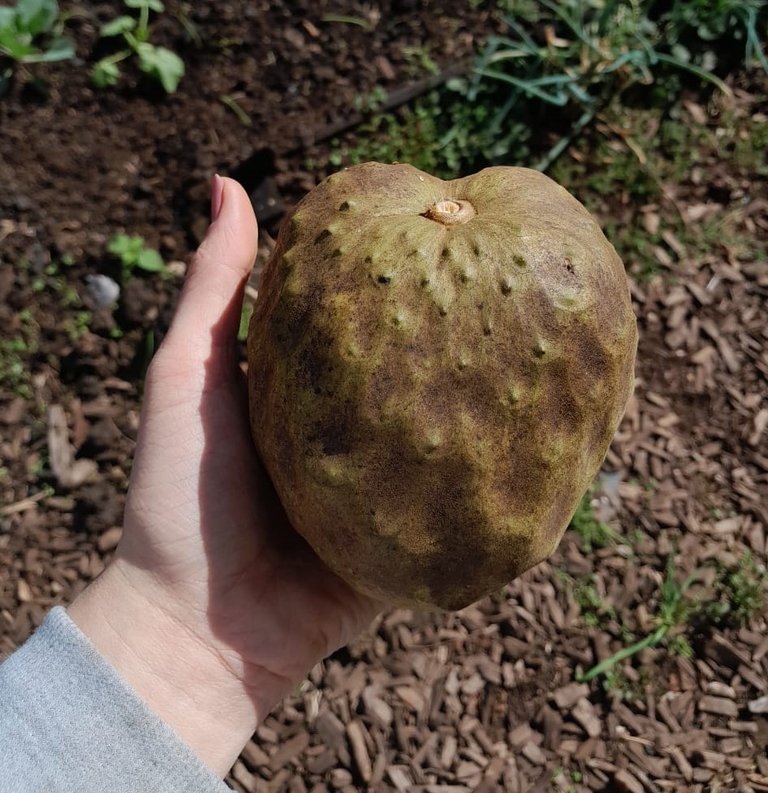
Pure white flesh inside, with black seeds peeping out, but I still was not convinced I would enjoy this strange-looking fruit.
I was so wrong!
It was pure heaven; super-sweet, fragrant, with a texture almost like a pear but way more velvety. I've never tasted a fruit as delicious as this! One would never expect this from a fruit that is not a pretty sight on the outside, except that it is heart-shaped!
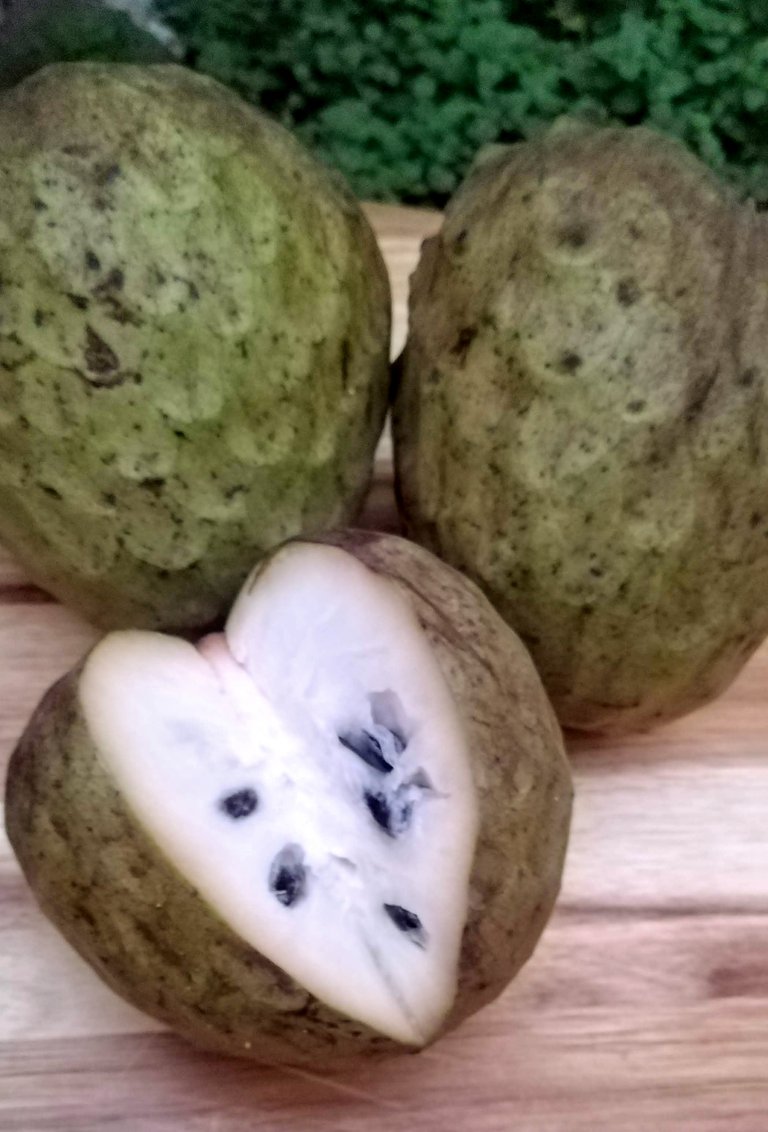
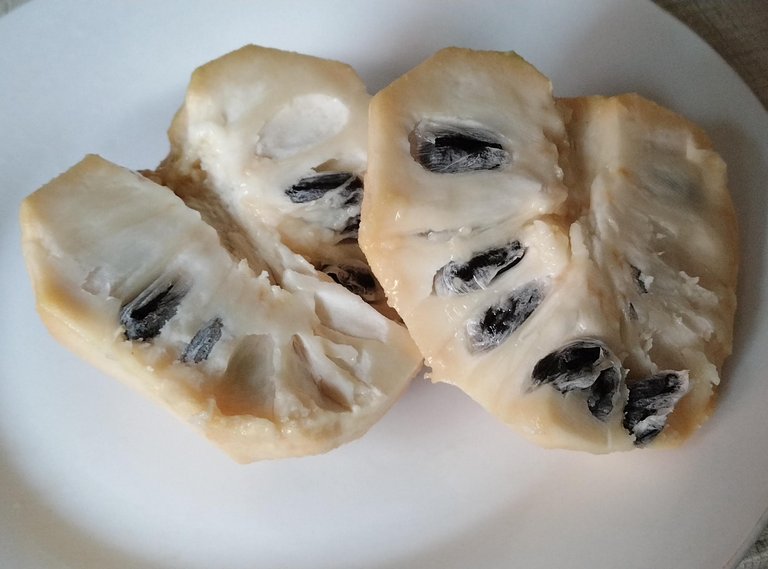
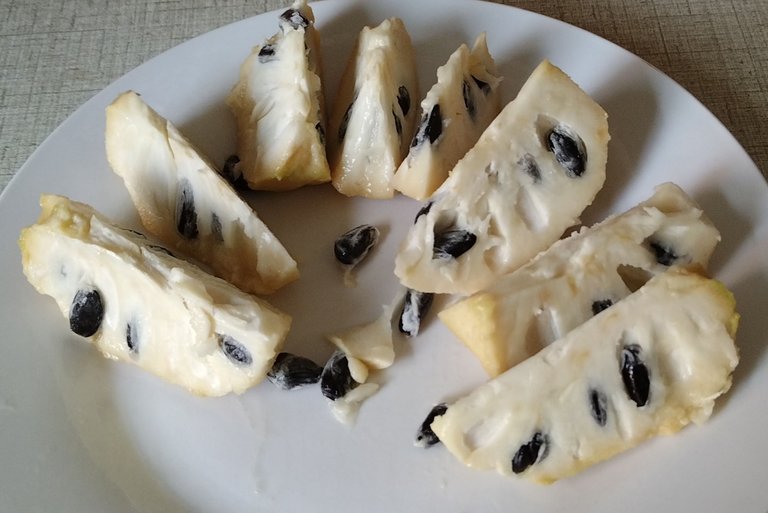
I found an apt description of the taste online; they also call it Sweetsop / Sugar Apple:
creamy, vanilla-infused apples with real custard richness.
Source
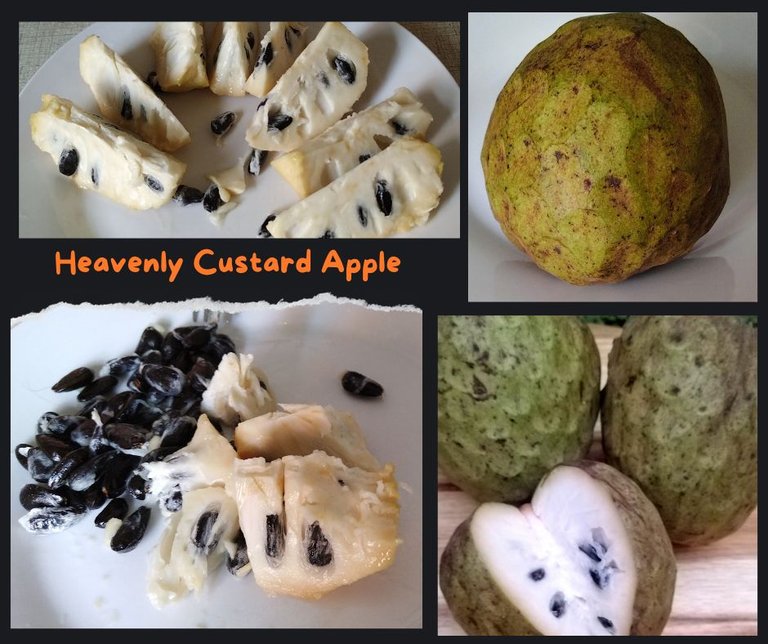
It is full of large black seeds; one could grow a forest if one had the space and lived in a tropical/ sub-tropical frost-free climate, such as we have. I'm surprised that few gardens around us have this fruit tree as it only grows to a height of 2 - 6 metres; I heard my Indian friends talk excitedly about seeing a Custard Apple tree in someone's garden but was not told just how special they are.
The area where my young guest lives, does get frost, so their tree gets a bit of a beating, but has survived, and gives an abundance of fruit annually.
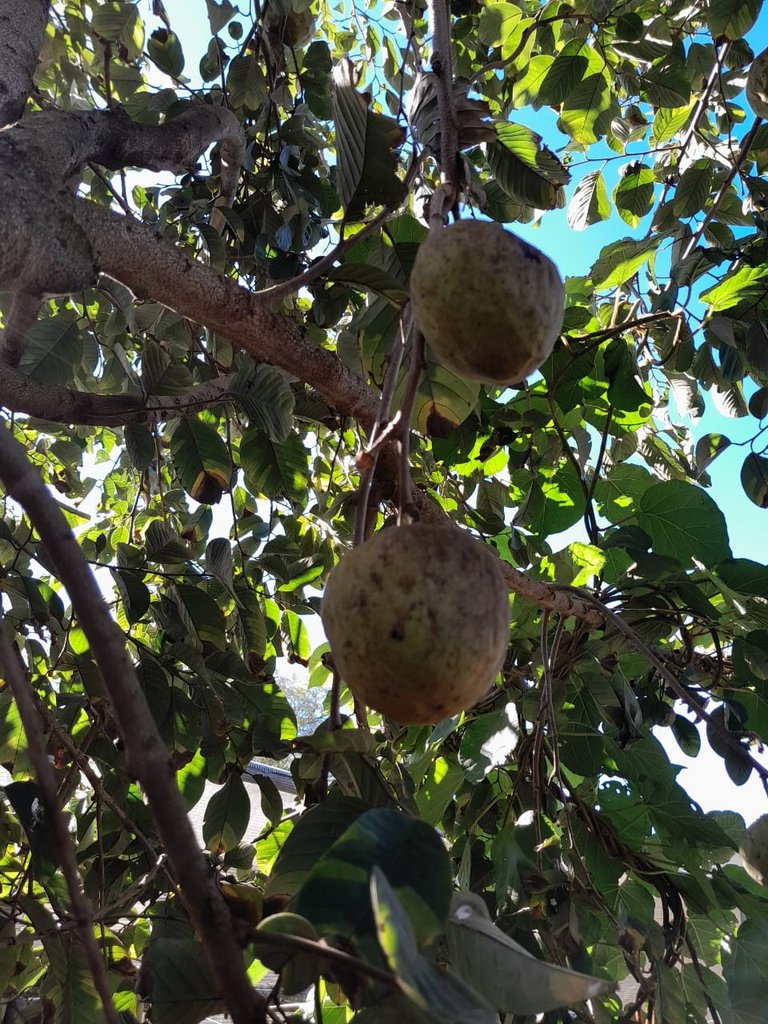
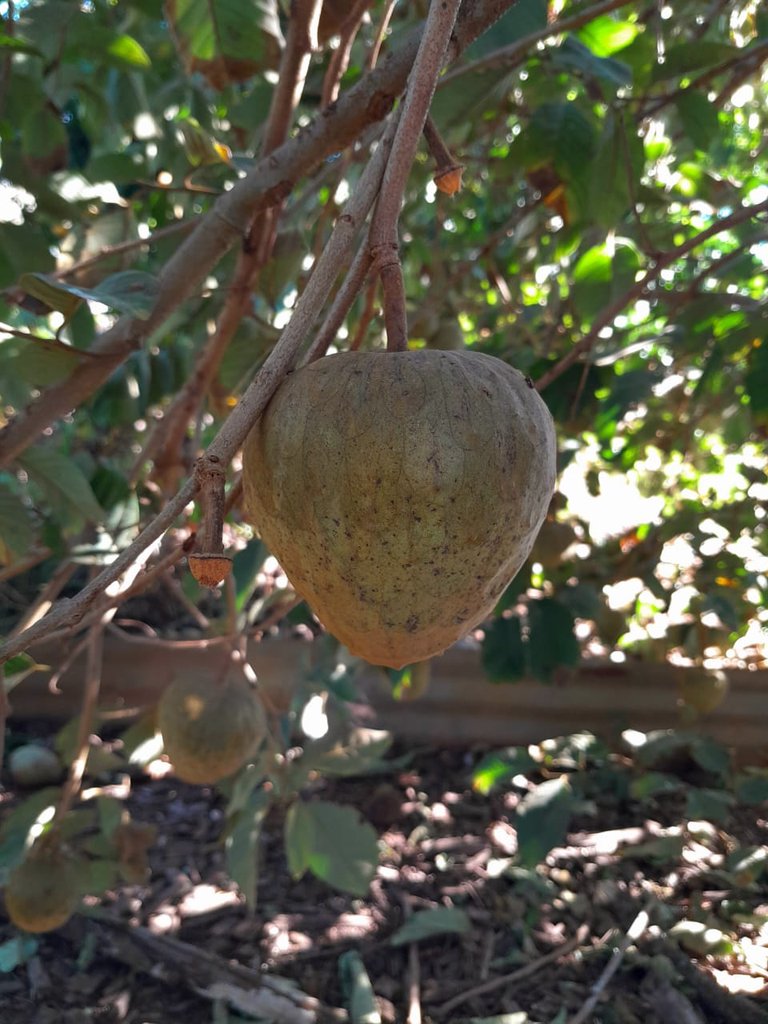
These images were taken by my guest's sister
Custard Apple and Indian Mythology
A friend told me there's a legend attached to the Custard Apple.
In Hindu mythology, Diwali is the day Lord Rama, his wife Sita Devi and brother Lakshmana return to their homeland after 14 years in exile. The villagers lit a path for Rama, who had defeated the demon king Ravana.
Source
The fruit is known as 'Sita phal' or 'Seetha pazham' in India and other regions.
It is said that while hungry and thirsty in the woods during their exile, Sita asked Rama to find fruit to eat. He shot an arrow into the ground, and a custard apple tree magically grew from that spot. This tree provided them with food in the woods.
Diwali, the Festival of Lights, is a celebration of their return from exile, marking the triumph of good over evil, and light over darkness.
As I've said before, we're not only known as the Rainbow Nation, with diverse cultures and religions but also live in a megadiverse country with natural wonders on land and sea.
The Custard Apple is a fruit I will not walk past because of its appearance if ever I see it in a fruit and veggies market.
A lesson learned, once again, is that one should not judge a book by its cover; that outward appearances do not matter; the real treasures are hidden within, waiting to be discovered!

Create your own Forever Memory Bank
Join our community of awesome content creators
right here on HIVE
𝙁𝙤𝙧 𝙩𝙝𝙚 𝙔𝙤𝙪𝙣𝙜 𝙖𝙩 𝙃𝙚𝙖𝙧𝙩
Join our Silver Bloggers community 
Artwork by @artywink
